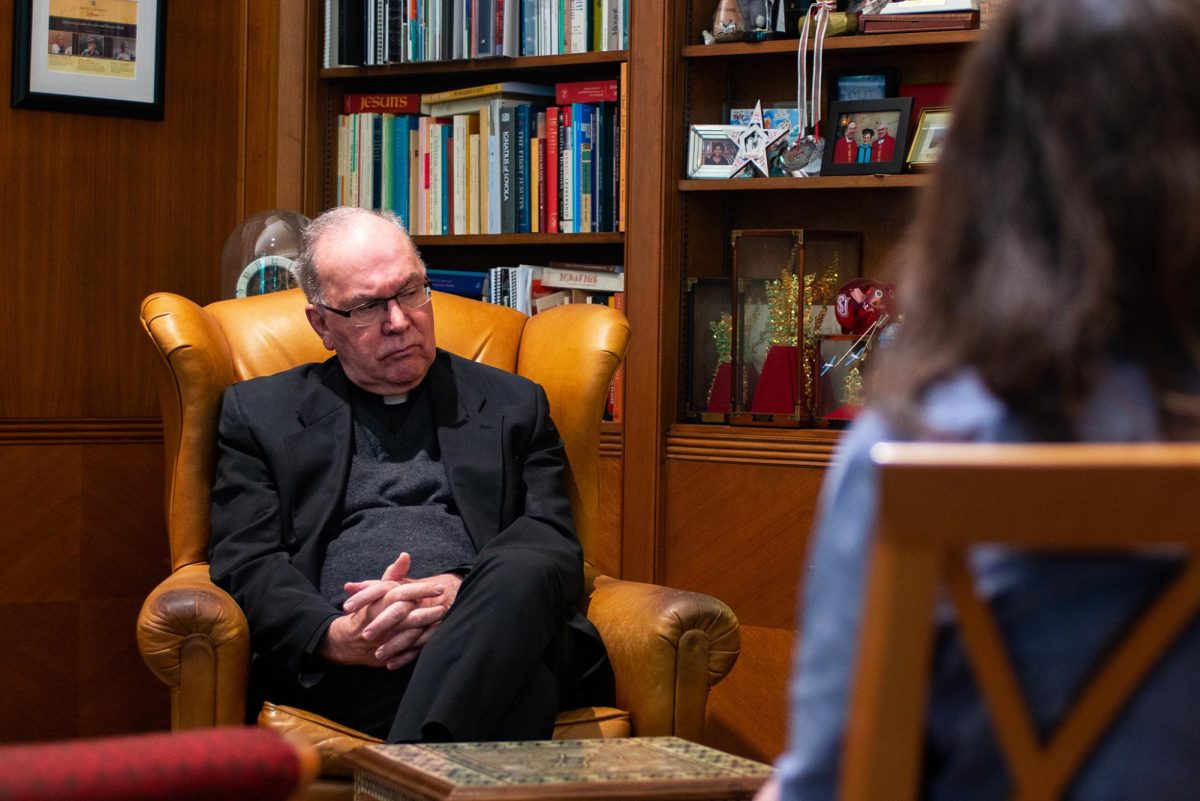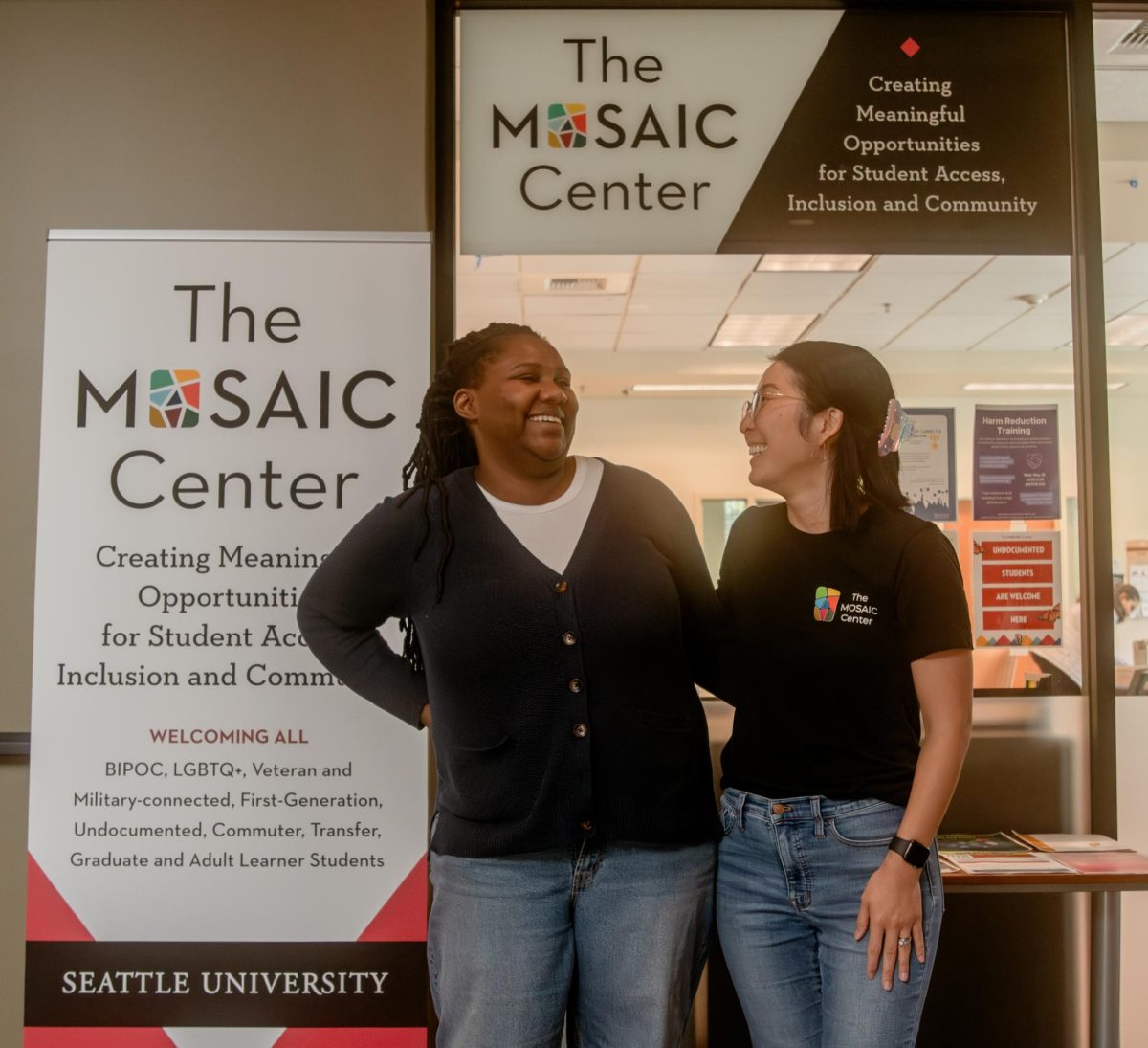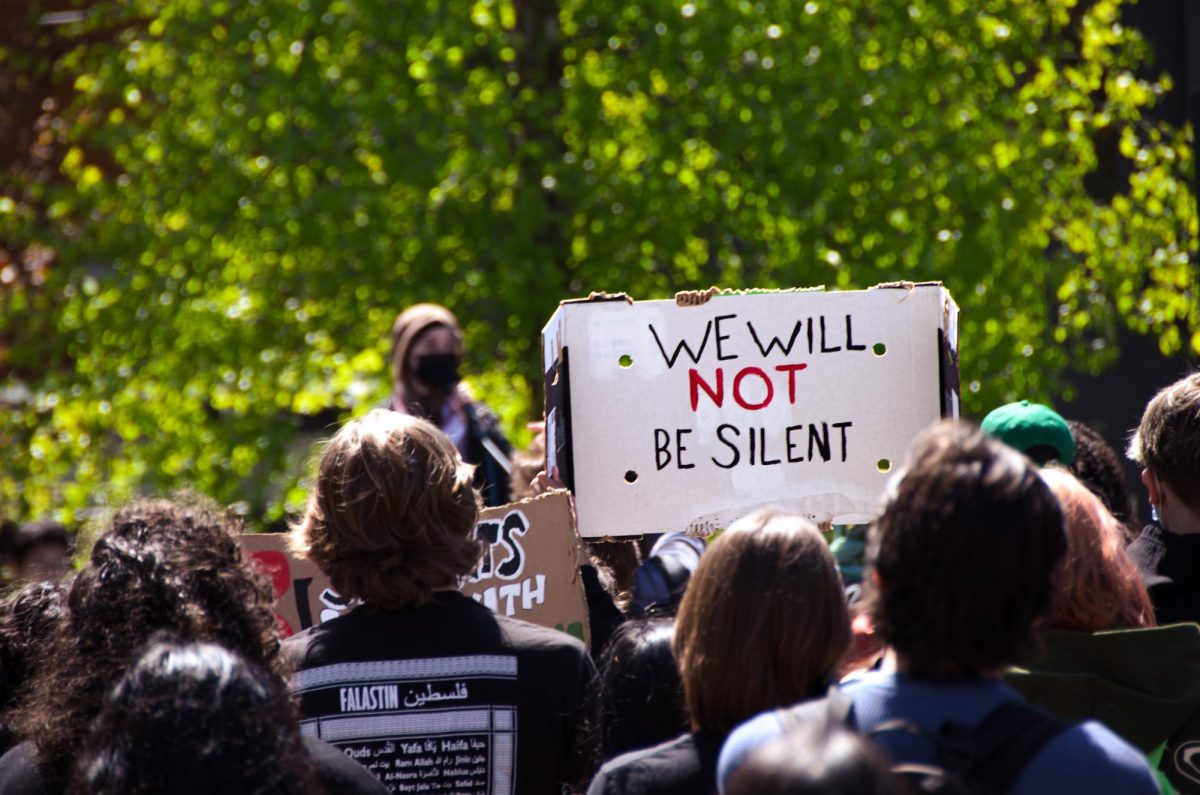Late one night during her freshman year, Jane* got into an Uber she had ordered off campus. She got back and waited in her room without changing her clothes. When it was time, she went to the emergency hour appointment at Seattle University’s Counseling and Psychological Services, or CAPS. Though Jane had hoped to talk to the counselor she usually talked to, she instead confided in another counselor. She had been raped.
As she talked to the CAPS counselor and decided to have a rape kit administered, Jane’s voice was raspy and she bore bruises all over her body. “They supported my choice because I think I was pretty clear. I hadn’t changed my clothes because I wanted, if I ever decided to report to police…all the evidence I needed.”
A Public Safety officer drove Jane to the hospital along with another CAPS employee. They waited with her for about an hour then left. Jane completed the rape kit, a forensic examination that records and collects evidence from the assault. After, she agreed to stay overnight because clinicians were concerned that she didn’t have anyone to support her at home. The next morning, she walked home alone.
Jane did not end up making a formal report or pursuing an investigation because her rapist was an acquaintance. However, looking back now, Jane wishes somebody had helped her navigate all of her options or followed up after she got home from the hospital. She acknowledges that she wasn’t in the state to make calls effectively since not much time had passed since the incident. She had spent the night alone in the psych ward—no one knew where she was besides herself.
“[My experience] could have been softened by more resources or aid from the school.”
In light of the #MeToo movement and sexual assault awareness month in April, conversations about sexual misconduct are becoming increasingly important in finding ways to educate university members on how to support survivors and prevent other incidents from happening in the future.
One area of focus that is gaining more attention in the university is the reporting of incidents of sexual misconduct. Throughout the university, there is much perplexity over the parameters of reporting, who is required to report and what happens after the initial notification.
Many refer to the requirement that incidents of sexual harassment and assault be reported to administration as “mandatory reporting.” However, mandatory reporting references child abuse while “notification requirements” reference sexual misconduct.
According to the Seattle University website, “The university encourages all members of the university community to report incidents of discrimination, harassment, sexual misconduct or retaliation” to Title IX Coordinator Andrea Katahira, Dean of Students James Willette, the Department of Public Safety and EthicsPoint which offers anonymous submissions.
But while the university encourages all members to report sexual misconduct, there are members of the Seattle U community that hold responsibilities as mandatory reporters. According to the Title IX Coordinator, these include all staff and faculty members at Seattle U except for those in CAPS, Campus Ministry, and the Student Health Center.
The biggest concern of the university’s reporting process is what happens after the initial disclosure of an incident. Many students and professors believe that in reporting students’ experiences of sexual misconduct, they are initiating a formal, full-blown investigation that will be taken out of their control.
Theresa Earenfight, history professor and program director of woman and gender studies, believes “[the notification requirement] puts the professors in an untenable position,” she said. Earenfight recalled a time when she was approached by a female student. When the student requested that the door be closed at the beginning of the conversation, Earenfight had a feeling that the student would confide in her about an incident of sexual misconduct. Her premonitions were confirmed when the student asked, “Are you going to mandatorily report this?”
Earenfight describes her conflict with the notification requirement’s impact on her relationship with students and their trust. “If I say ‘yes,’ then…we won’t be able to deal with anything. If I say ‘no,’ am I violating my responsibilities, but putting the student first?”
At the beginning of and throughout each year, returning faculty and staff go through online and in-person trainings. New employee orientations, which happen once a month, also provide in-person trainings for new Seattle U members.
Earenfight notes that other faculty and staff members, especially in the sociology and social work departments, do not feel adequately prepared or trained by the university on how to handle situations in which students share and confide their experiences of sexual abuse. “Mostly sociology and social work are particularly troubled by [the notification requirement]. I don’t know how psychology feels, but I would think that they would also be troubled because it puts the professors in an untenable position.”
The notification requirement is meant to support and supplement faculty and staff members’ initial reactions to students reaching out. Faculty and staff are supposed to provide students with nonjudgmental listening and ensure their awareness of on-campus resources, of Institutional Equity (OIE) within 24 hours. From there, OIE and Andrea Katahira reach out to the student again to offer support and resources. If the student does not wish to further engage, they are not forced to talk to Katahira or open a formal investigation. Katahira affirms that when a faculty or staff member notifies her that a student confided in them, “A notification does not equal a formal report.”
Since OIE investigators and Katahira must maintain unbiased positions during formal investigations, they can provide university assistance, rather than counseling, for the students involved. University assistance includes housing modifications, academic accommodations (excused absences), hardship withdrawals and no communication orders. These implementations are both options that offer institutional relief in academic and housing matters.
“The goal is to ensure the student’s health, safety and wellbeing and their ability to continue their education at Seattle University,” Katahira said, “If that is what they choose.”
However, since students are expected to reach out for further emotional support beyond OIE, they sometimes feel uncared for and left in the dark.
President of Seattle U’s Triangle Club Ann Marie Zocchi desired more of a “bedside manner” during the formal investigation into their own experience of sexual harassment during their freshman year. After confiding in their RA, not realizing that RA’s are mandatory reporters, Zocchi received an email asking for a statement on the incident. After, they didn’t receive follow-up or notifications about the progression of the investigation. “I felt forgotten. I felt like it just disappeared, it went away, because no one was saying anything…months go by and you don’t hear anything from the university after bearing your soul to someone.”
Many of the criticisms of Seattle University’s treatment of sexual misconduct and reporting policy are based on the desire and need for more communication among students, faculty, staff and administration. Sexual misconduct—harassment, assault, domestic violence, stalking, any other form of sexual abuse—affects each individual and, more importantly, the entire community. It leads to harmful effects on our community such as fear and a lack of candid, nonjudgmental dialogue.
Earenfight explained that having an understanding of the reporting process and an atmosphere that allows openness “takes away the fear.”
“When a student comes in to talk about this, there is an awful, tremendous weight on their head of fear. If what we can do to take that away, to diminish that, then we can take the next step. Then we can work on how to remedy it.” Earenfight said.
Seattle U’s Student Survivor Network President Ash Vera, “I think that the biggest problem at SU and across universities in the country is this divide between administration and people of power and their concept of what’s happening on campus and what’s affecting students and how they’re interacting with one another versus the actual experiences that students are having.”
Vera also expressed the need for a campus-run trauma center. They argue that, like those at other universities such as Columbia University, “a trauma center would lend itself to be a space where people can get the resources they need, there can be follow-up, but there’s not this position of power looming over them that they feel like they have to do anything.”
“It’s just people existing in a space they feel comfortable, having the resources if they want them, and being able to be essentially safe. I think administration can help by endorsing this, by fighting for it, for going the extra step and looking into universities that have trauma centers, because there are many of them, and looking at why they are so beneficial.”
In the meantime, Vera, Katahira and Vice President of Diversity and Inclusion of Diversity Natasha Martin are working on the formation of the Healing Trauma Collective which would serve as a platform for students, faculty and staff and the community at large. While it is only in its early planning phase, they hope to connect student-led organizations and administration-level organizations to discuss what’s happening on campus concerning sexual misconduct and violence.
“This is a very unique community. All universities are these distinct places and we need to make sure that everyone in that community feels like they can be safe,” said Earenfight. “And there’s nothing that makes you feel more unsafe than sexual assault.”
*Jane is a fake name used to protect the subject’s identity.
Elise can be reached at
[email protected].











